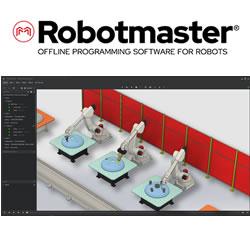Apptronik Raises $350 Million to Scale Production of AI-Powered Humanoid Robots and Meet Significant Customer Demand
B Capital, Capital Factory and Google back Apptronik in the race to develop and deploy humanoid robots at scale
Today, Apptronik, the AI-powered humanoid robotics company, announced the successful closing of a $350 million Series A funding round co-led by B Capital and Capital Factory, with participation from Google. The new funding marks a pivotal moment for Apptronik, fueling the deployment of Apollo—its groundbreaking humanoid robot—while enabling the company to scale operations, accelerate innovation, and grow its world-class team to meet the surging demand for next-generation, AI-powered humanoid robots.
"We're creating the world's most advanced and capable humanoid robots, designed to work alongside humans in meaningful and transformative ways," said Jeff Cardenas, CEO and co-founder of Apptronik. "By uniting cutting-edge AI with hardware engineered for meaningful interaction, we're shaping a future where robots become true partners in driving progress. It's inspiring to have investors who believe in this vision and are committed to helping us bring it to life."
Capital Factory Chairman and first outside board director of Apptronik, Gordon Daugherty said, "We continue to be proud investors in Apptronik because we believe they're not just building robots—they're setting a new standard in human-centered AI. Apollo's refreshingly friendly and approachable design perfectly reflects the company's vision for humanoid robots that benefit businesses, individuals, and humanity. We believe Apptronik is leading the charge in a rapidly growing market."
This investment allows Apptronik to:
• Accelerate the development of next-generation humanoid robots, including quickly advancing iterations of Apollo and exploring new form factors. New innovations will expand Apollo's capabilities, enabling it to address a wide range of applications in industries like logistics and manufacturing, as well as eldercare and healthcare in the future.
• Push the boundaries of humanoid robot design and development. Apptronik's full-stack approach to designing a humanoid robot platform underscores its commitment to innovation and the creation of human-centered robots that are not only highly functional but also user-friendly and approachable. Apptronik's world-class design includes a heritage of unique actuation, or motor, technology that unlocks affordability, simplifies maintenance, and paves the way for mass production.
• Meet skyrocketing customer demand. Apptronik is scaling manufacturing of Apollo units to fulfill growing orders across priority verticals—including automotive, electronics manufacturing, third-party logistics providers, beverage bottling and fulfillment, and consumer packaged goods.
This follows three transformative years of record growth for Apptronik. In 2022, Apptronik joined forces with NASA to advance humanoid robotics innovation. Last year, the company collaborated with NVIDIA to show dexterous manipulation and will work with customers to leverage Apollo in Omniverse digital twins. It also established a landmark strategic partnership with the Google DeepMind robotics team to combine best-in-class AI with Apptronik's cutting-edge humanoid robot platform. Furthermore, the company secured foundational commercial agreements with industry leaders Mercedes-Benz and GXO Logistics, demonstrating the real-world applications and market demand for its advanced humanoid robots.
Founded in 2016 at the University of Texas at Austin's Human Centered Robotics Lab, Apptronik has established itself as a leader in humanoid robotics. The company has developed 15 robotic systems, including the NASA Valkyrie, before unveiling Apollo—an AI-powered humanoid designed for industrial work. Built for seamless collaboration in logistics, manufacturing, and retail, Apollo combines technical excellence with human-centered design. With expanded deployment planned for 2025, Apollo is poised to transform workplaces worldwide.
Apptronik accomplished this with only $28 million in previous funding, demonstrating impressive capital efficiency. This $350 million Series A funding round underscores the growing confidence in Apptronik's execution and vision for the future of humanoid robotics. Backed by key partners and investors, this new funding fuels the continued development and deployment of Apollo, positioning Apptronik at the forefront of creating scalable, AI-powered solutions for industrial applications today and consumer applications in the near future.
"With Apptronik, we see a world in which humanoid robots play a vital role in addressing societal challenges—from assisting with disaster relief and elder care to supporting space exploration and medical advancements. Industry leaders like Mercedes-Benz and GXO Logistics are already seeing the real-world impact of Apptronik's technology," said Howard Morgan, Chair and General Partner of B Capital. "We back the most innovative founders, and there's no exception here. Jeff and the team are redefining robotics while reshaping our world for the better."
About Apptronik
Apptronik is a human-centered robotics company developing AI-powered humanoid robots. Our goal is to create human helpers to support humanity in every facet of life. Our robot, Apollo, is designed to collaborate thoughtfully with humans—initially in critical industries such as manufacturing and logistics, with future applications in healthcare, the home, and beyond. Apollo is the culmination of nearly a decade of development, drawing on Apptronik's extensive work on 15 previous robots, including NASA's Valkyrie robot. Apptronik started out of the Human Centered Robotics Lab at the University of Texas at Austin and has over 150 employees.
Featured Product

